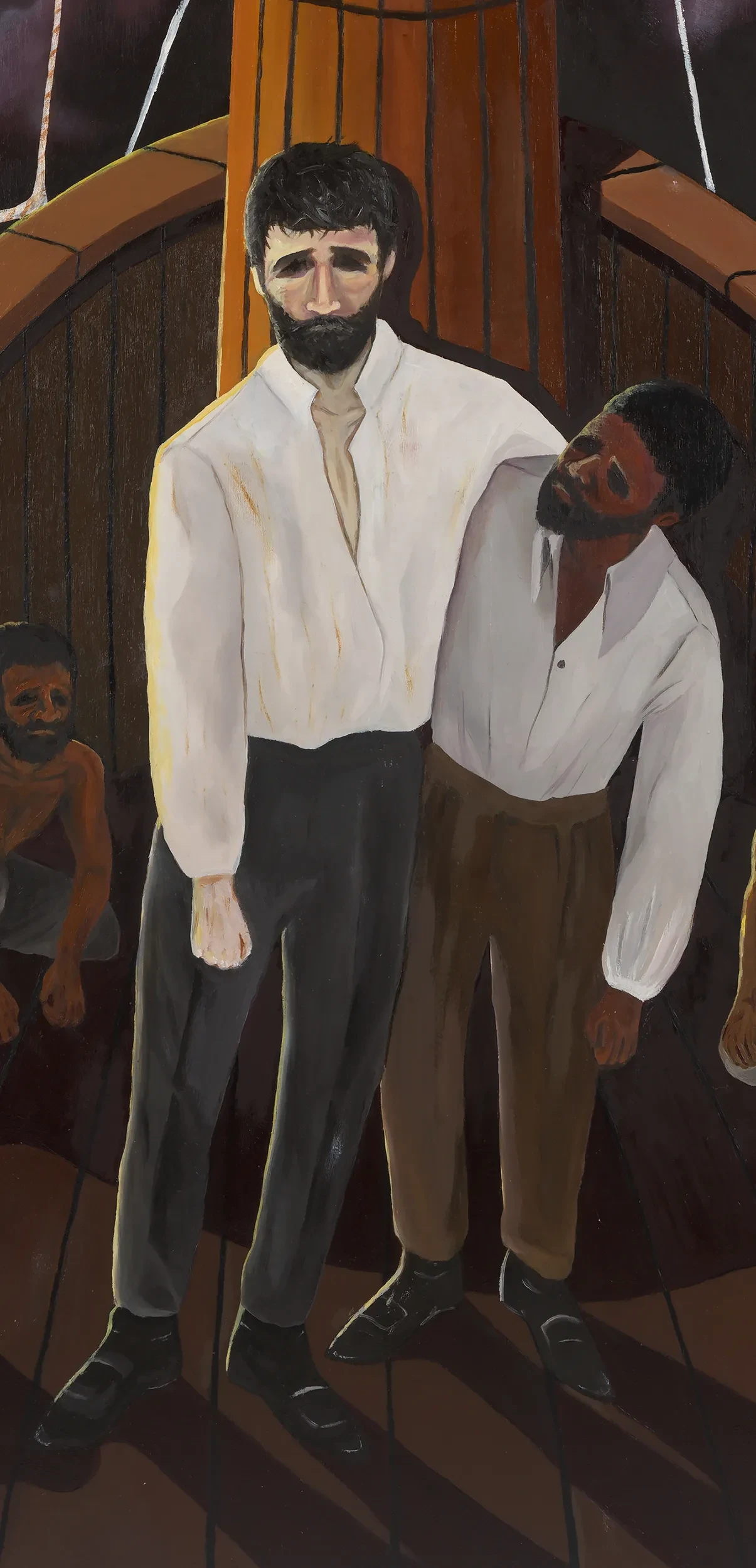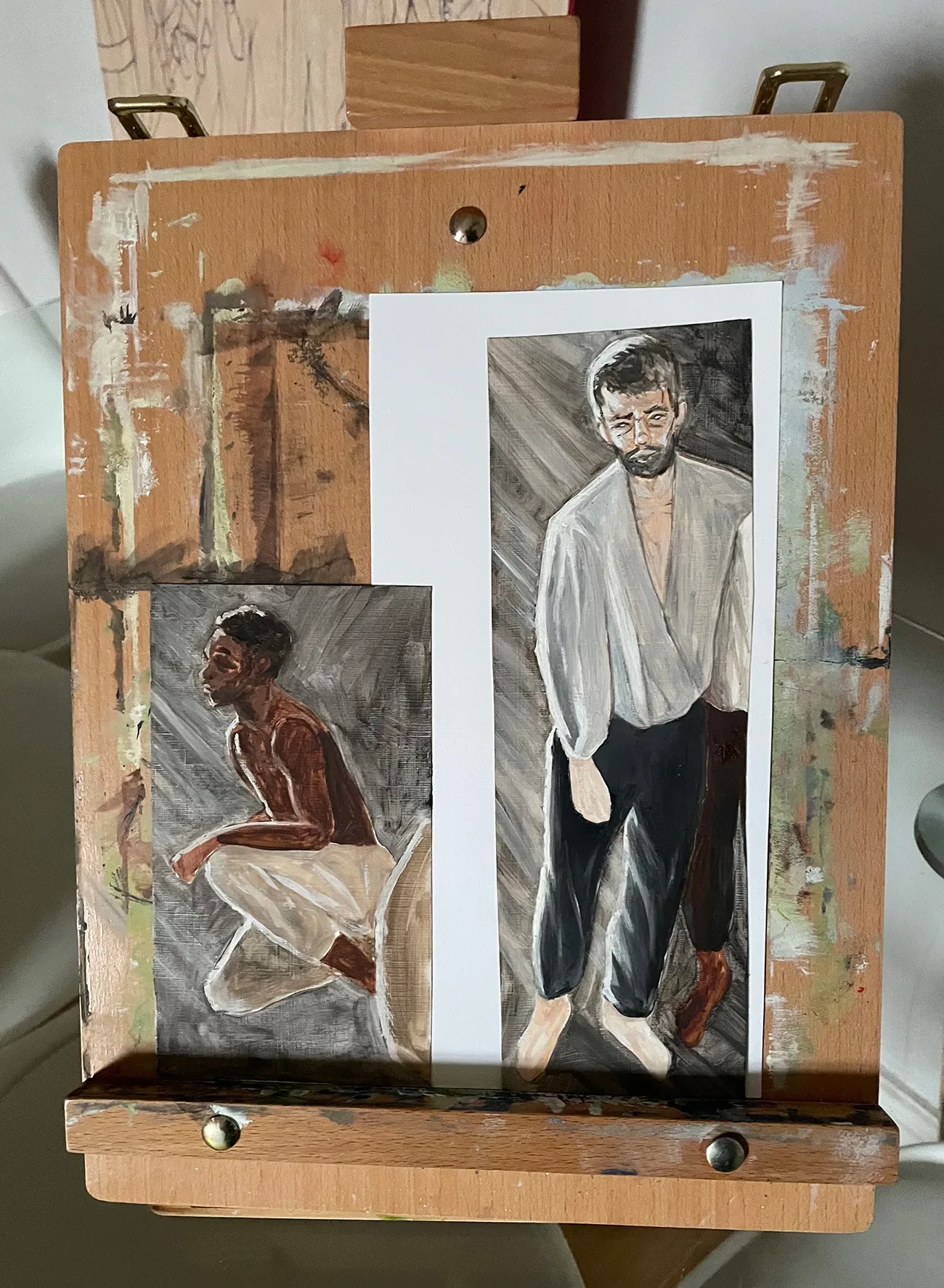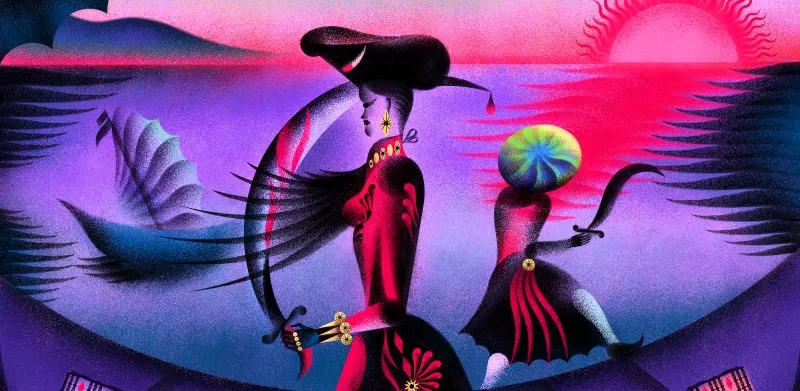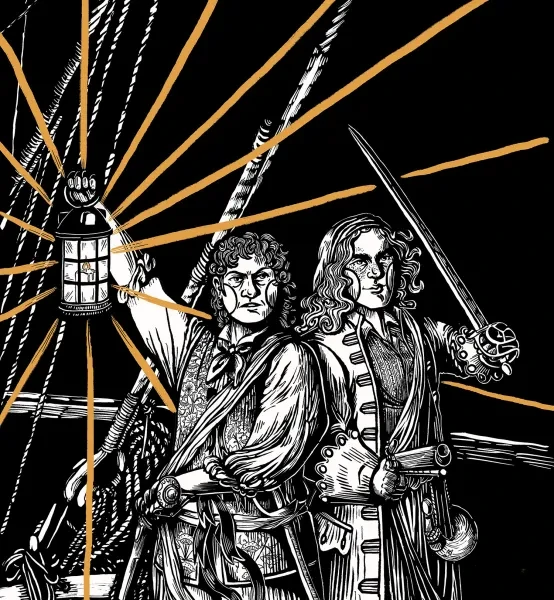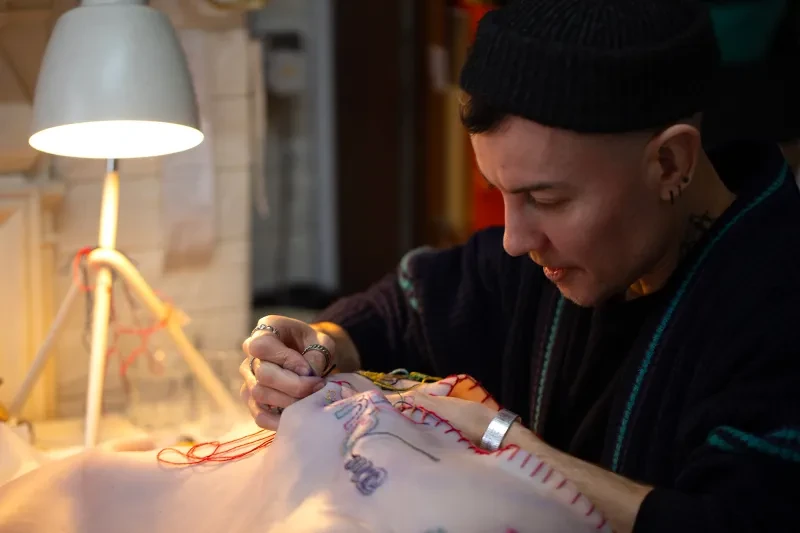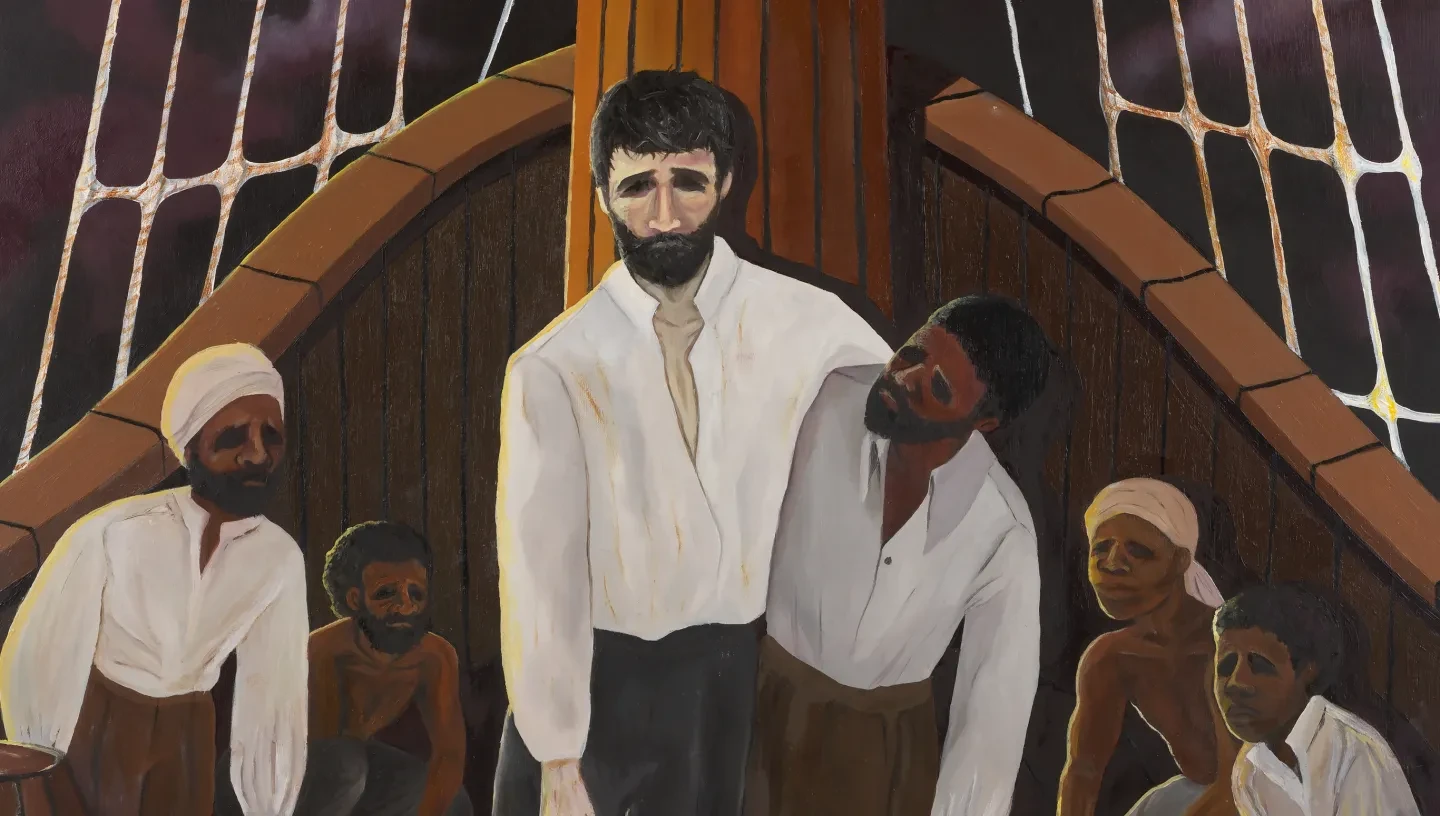
Take a closer look at one of the artworks on display in the Pirates exhibition at the National Maritime Museum, and all is not what it seems…
Titled Spot the Pirate, the piece depicts a white captain being supported by a Black seafarer on a slave ship.
For creator Maïa Walcott, the work challenges viewers to question their assumptions about agency and power dynamics. “I wanted to create a work that was subversive, and makes the viewer confront their own gaze,” she says. A multi-disciplinary artist, Walcott uses sculpture, painting and illustration to explore themes including Black British identity.
Spot the Pirate was commissioned by Royal Museums Greenwich as part of a project to showcase less well represented stories of piracy. Discover the influences that shaped Walcott’s work, and the layers of meaning in the piece.
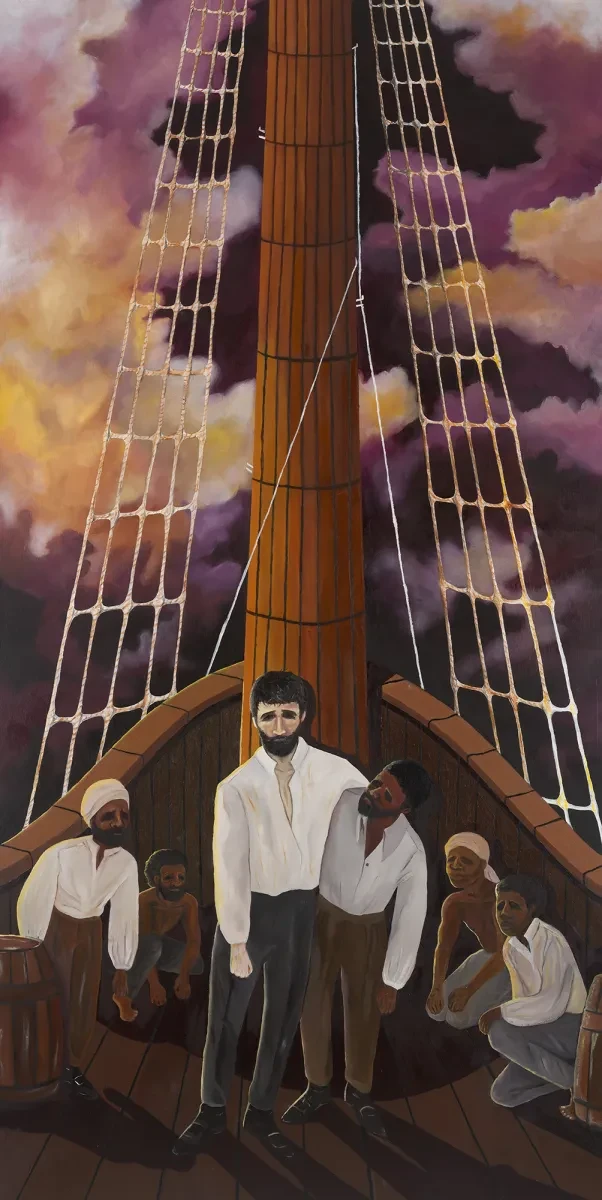
Spot the Pirate
By Maïa Walcott
Can you give an overview of Spot the Pirate?
The artwork is loosely based on Herman Melville’s 19th century novella Benito Cereno. It’s quite a complex story, but it’s told from the viewpoint of an American seafarer called Captain Delano, who encounters a distressed Spanish slave ship called the San Dominick.
He boards the ship to offer help, and encounters Captain Benito Cereno and other members on board including a Black seafarer called Babo. However, Captain Delano realises something is awry and discovers that a slave revolt has taken place.
My painting imagines what a scene on the ship could look like. It’s painted from the perspective of Captain Delano looking at the frail Captain Cereno, who is being propped up by Babo.
At first glance, this depicts a typical scene on an 18th century ship – there’s a white captain and Black figures – but things aren’t quite what they seem. The viewer doesn’t immediately know that Babo is the one in control.
Where did the idea come from?
When I was thinking about piracy, I found it hard to ignore the significance of the period in which pirates were operating: a time of empire and the transatlantic trade of enslaved people.
I was introduced to Benito Cereno by my sister, who is a professor at the University of Maryland. We realised that in this story, the enslaved peoples achieve agency through piracy. While searching through archival materials at the Caird Library I often saw enslaved people referred to as ‘cargo’ instead of ‘individuals’ or ‘crew’, and I was keen to explore this further.
I wanted to look at what defines a pirate, privateer or buccaneer. It’s a bit of a grey area, and I wanted to blur that even further by arguing that an enslaved person acting in revolt and seizing a ship was a form of piracy – but a necessary kind: in order to transform themselves from ‘cargo’ into ‘people’, they had to become ‘pirates’.
The title of the work, Spot the Pirate, plays with the question: “Who does the viewer assume is the pirate in this scene?” I would like viewers to notice the physical positioning of Babo and Captain Cereno, and how Babo appears to be subservient because he’s lower in height and supporting Cereno. The unthinking eye may also miss the small visual cues to suggest the Black people on the ship have agency: they are unshackled and wear similar clothing to the white captain.
I want to challenge the viewer’s expectations about who is really in control, and for them to confront assumptions about authority, race and historical narratives. I was particularly inspired by the photographer Zanele Muholi, whose work explores the influence of the gaze and the subversion of power roles.
Having this artwork on display in the National Maritime Museum – an institution that is acknowledging and doing its own work to recognise where it sits in history – feels subversive too.
What did your creative process involve?
I was beyond excited to create an artwork for the Pirates exhibition. Spot the Pirate is made with oils on plyboard, which I built up in layers. I visited Cutty Sark to understand how the ship in Benito Cereno may have felt and looked: the grain of the wood, the shape, the towering height of the mast – which features in the centre of my piece.
For the skies I was inspired by the art of J.M.W. Turner, from his use of colours in clouds to the motion of the waves. I created smoky clouds streaked with purple and yellow to reflect the moody feel of the ship.
My finished piece is a departure from the works I usually create, which are contemporary, and centred around migration and the cultural influence of British Caribbean music. While Spot the Pirate is set hundreds of years before this, it does feel like the starting point from which all my art comes.
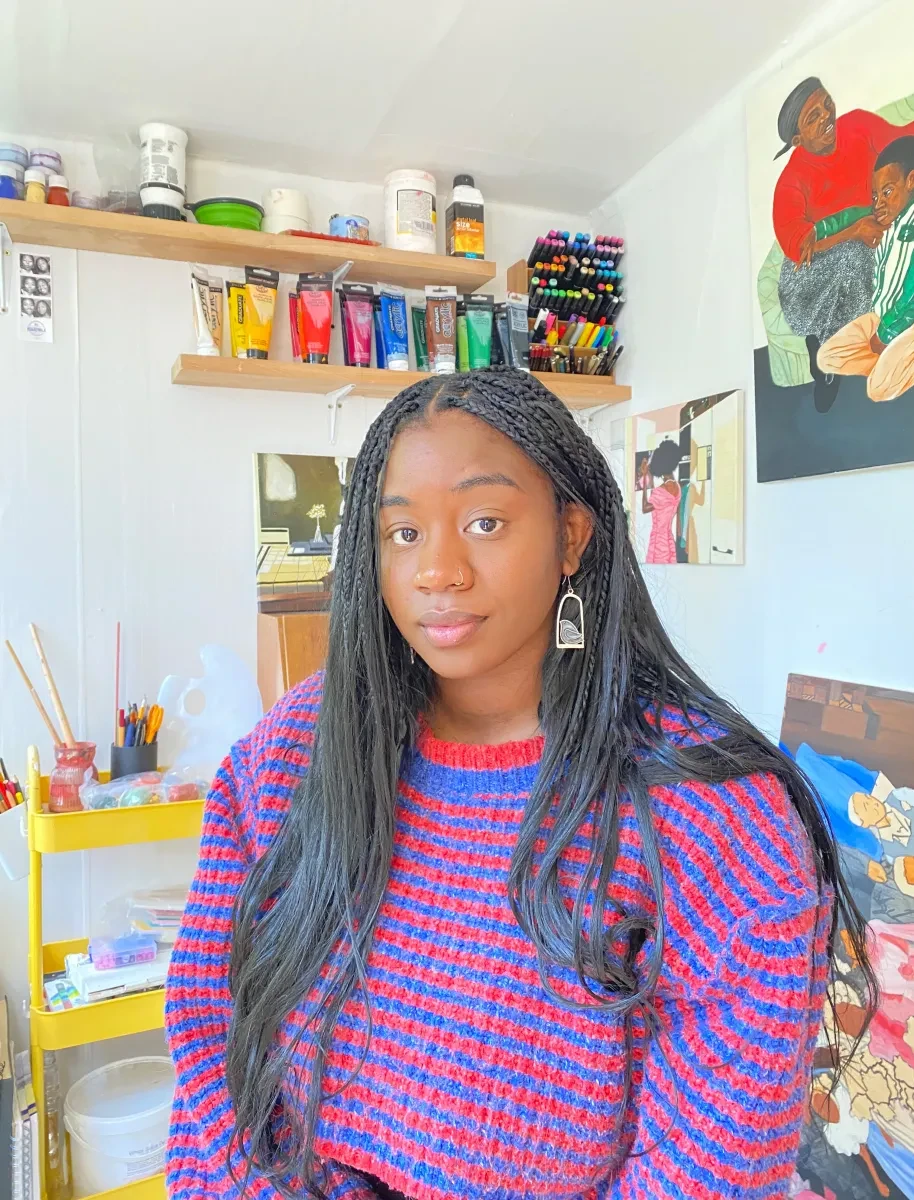
About the artist
Maïa Walcott is a multi-disciplinary artist working with sculpture, painting, illustration and photography. Her work has been exhibited widely, from publication of images of her sculptures in the anthology The Colour of Madness to illustrations in the literary magazine The Selkie.
She has a degree in Social Anthropology from the University of Edinburgh.

